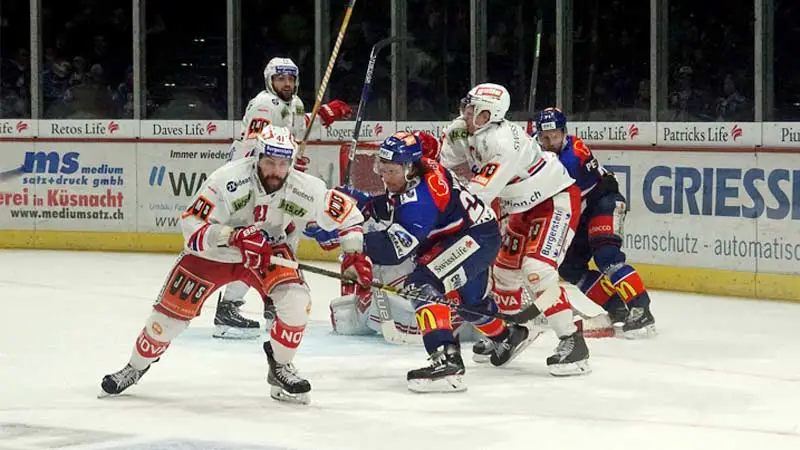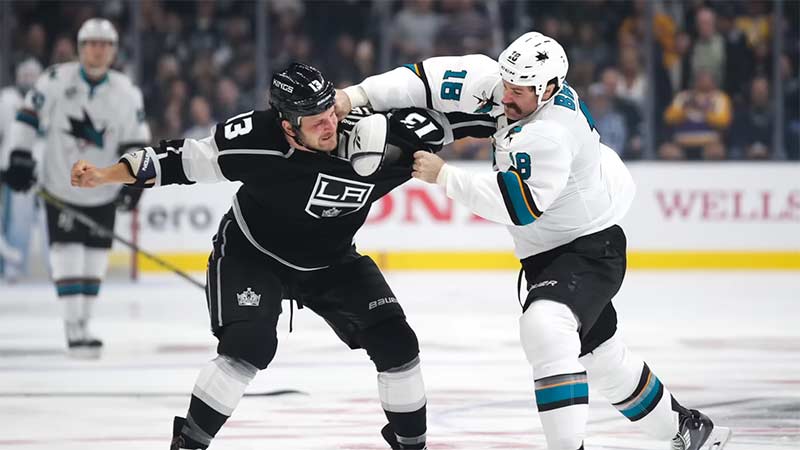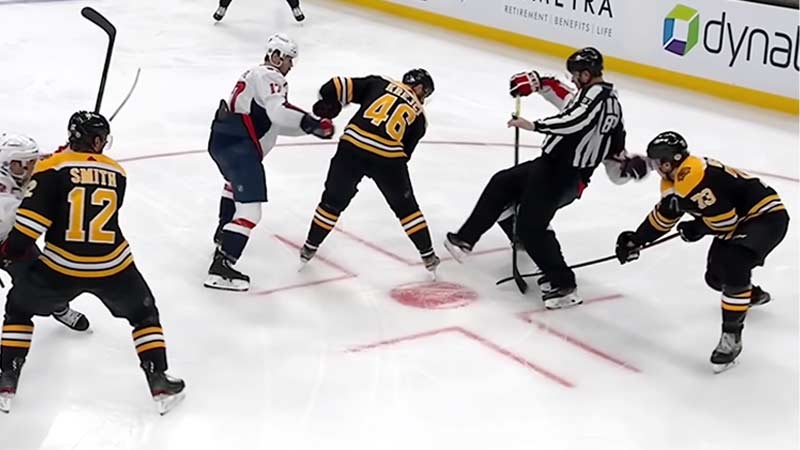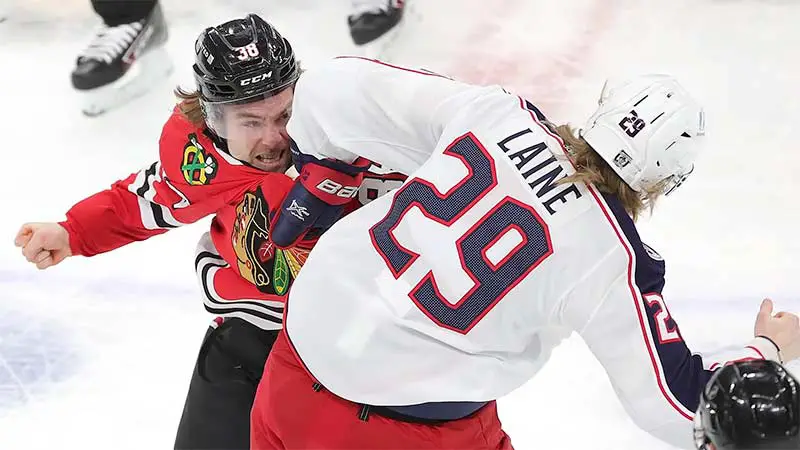In college hockey, the question of whether players are permitted to engage in fights often arises. While fighting is allowed within the sport, it is not actively encouraged.
College hockey places a strong emphasis on skill development, teamwork, and sportsmanship, prioritizing these aspects over physical altercations on the ice.
Players who choose to participate in fights during games face penalties, potential ejections, and disciplinary actions.
Although fights do occur in college hockey, they are not as common as in professional leagues. The focus remains on fostering a positive team culture and honing players’ abilities rather than promoting aggressive behavior.
When fights do happen, players involved receive major penalties and may be ejected from the game, with repeated incidents potentially leading to suspensions or further disciplinary measures from the league.
Referees play a crucial role in managing and addressing fights that occur during college hockey games, ensuring fair play and upholding the sport’s values.
Understanding the Rules of Engagement in College Hockey

The NCAA’s Stance on Fighting
The NCAA takes a firm stance against fighting in college hockey, emphasizing the importance of skillful play, teamwork, and sportsmanship.
Unlike professional leagues where fighting is more tolerated, the NCAA implements strict regulations to discourage physical altercations on the ice.
Engaging in a fight during a college hockey game results in immediate ejection from the match, highlighting the zero-tolerance policy towards fighting incidents.
Penalties and Enforcement of Rules
Players who choose to ignore the NCAA’s regulations and engage in fights face severe penalties and disciplinary actions. Besides the immediate ejection from the game, they are also subjected to potential game disqualifications.
Repeated offenses can lead to significant suspensions, impacting the player’s eligibility to participate in future matches.
Referees play a crucial role in enforcing these rules to maintain fair play and uphold college hockey’s values of skill development and positive team culture.
The History and Evolution of Fighting in Hockey
From Professional Leagues to Collegiate Sports
Professional ice hockey leagues in North America, like the NHL, have a history of allowing fighting during games as a form of player enforcement, unlike sports such as basketball or football.
However, collegiate hockey under the NCAA prohibits fighting among college players. The NCAA prioritizes fair play, teamwork, and skill development over physical altercations on the ice.
The Influence of North American Hockey Culture
Fighting is prominent in North American hockey, creating a distinct contrast between professional and collegiate leagues.
Professional hockey historically sees fighting as strategic, while collegiate hockey prioritizes skill development and sportsmanship.
Despite these differences, the influence of the accepted fighting culture in certain leagues impacts player behavior, referee roles, and the competitive atmosphere across different levels of the sport.
The Consequences of Fighting for College Players

Immediate Impacts and Game Penalties
When college hockey players engage in fights during games, they face immediate consequences in the form of penalties.
According to the regulations, players involved in fights receive a major penalty for fighting, leading to their ejection from the game.
This punitive action aims to discourage physical altercations and maintain the focus on skill, teamwork, and sportsmanship within college hockey.
Long-Term Ramifications for Players and Teams
Repeated incidents of fighting can result in more severe repercussions for both players and their teams. Players who engage in fights may face suspensions or other disciplinary actions imposed by the league.
These long-term ramifications not only affect the individual player’s eligibility to participate in future games but also impact the team’s overall performance.
Coaches emphasize the development of players’ skills and the promotion of a positive team culture, prioritizing sportsmanship over physical confrontations to uphold the values of collegiate hockey.
Alternatives to Fighting in College Hockey

Encouraging Sportsmanship and Fair Play
College hockey emphasizes sportsmanship and fair play by promoting positive behavior on and off the ice. Coaches and team leaders play a crucial role in instilling values of respect and integrity among players.
This focus on good sportsmanship discourages aggressive actions like fighting, creating an environment of mutual respect and fair competition where players who display exemplary sportsmanship are recognized, contributing to a positive atmosphere within the college hockey community.
Penalization and Disciplinary Measures
In college hockey, disciplinary measures are implemented to deter players from engaging in physical altercations like fighting. Referees enforce strict penalties for misconduct, including ejection from games and potential suspensions.
These measures serve as a deterrent against violent behavior, emphasizing that such actions are not tolerated in the sport.
By swiftly penalizing players involved in fights, colleges send a clear message that maintaining player safety and upholding the rules of the game are top priorities.
The Reality of Fighting in College Hockey Today
Current Trends and Enforcement Challenges
The NCAA opposes fighting in college hockey, aiming to prioritize skill development, sportsmanship, and player safety.
Despite strict regulations against fighting, enforcement challenges persist due to the emotional and spontaneous nature of in-game altercations.
Referees are crucial in managing these situations to maintain player safety and uphold the integrity of the game, as seen in the recent incident involving Tucker Ness and Dawson Bruneski.
The Perspective of Officials and Coaches
Officials and coaches in college hockey ensure a safe and fair environment, handling conflicts effectively and emphasizing respect and sportsmanship. Referees undergo training to manage tense situations and reduce fighting.
Coaches guide player behavior, focusing on discipline, self-control, and rule adherence to promote respect. The Tucker Ness incident underscores the role of coaches in shaping player conduct.
Emphasizing enforcement challenges and respect helps prioritize safety, skill development, and sportsmanship in college hockey despite its physical nature.
Frequently Asked Questions
Why does the NCAA prohibit fighting in college hockey?
To promote skill development and sportsmanship values among players, the NCAA enforces strict rules against fighting in college hockey, emphasizing fair play and player safety.
How do referees handle fights in college hockey games?
Referees in college hockey are vital in maintaining fair play standards by imposing immediate penalties on players involved in altercations and emphasizing the long-term consequences of fighting on the game’s integrity.
What are the challenges in enforcing rules against fighting in college hockey?
Despite the NCAA’s efforts to deter fighting in college hockey, enforcing these rules poses challenges due to the sport’s physical nature and the influence of North American hockey culture on player behavior.
What role do coaches play in preventing fights in college hockey?
Coaches play a crucial role in shaping player behavior, emphasizing respect, fair play, and accountability to create a culture that discourages fighting and prioritizes sportsmanship on the ice.
Conclusion
In essence, college hockey players are not allowed to fight, as the NCAA strictly prohibits fighting to prioritize skill development and sportsmanship.
Referees play a vital role in maintaining fair play values by penalizing altercations promptly and emphasizing the consequences of fighting.
Despite challenges in enforcement, coaches and referees continue to uphold a culture of respect, safety, and accountability on the ice.
The case of Tucker Ness and Dawson Bruneski serves as a poignant example of the complexities surrounding fighting in college hockey and the importance of instilling positive behavior in players.
Ultimately, the NCAA’s stance on fighting underscores the commitment to fostering a competitive yet safe environment for student-athletes to excel in the sport.








James Felix